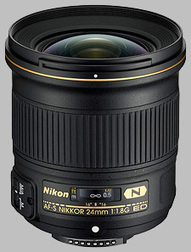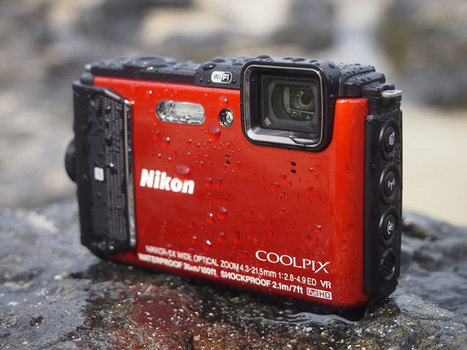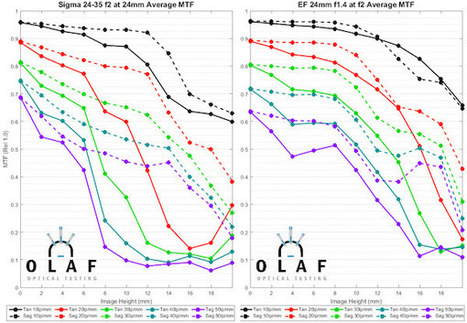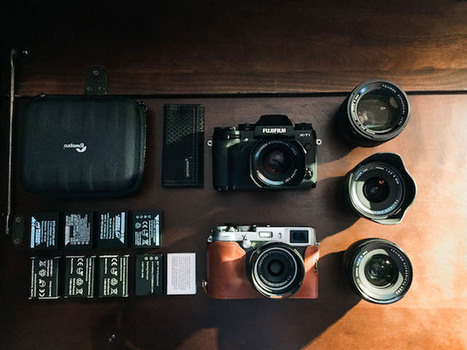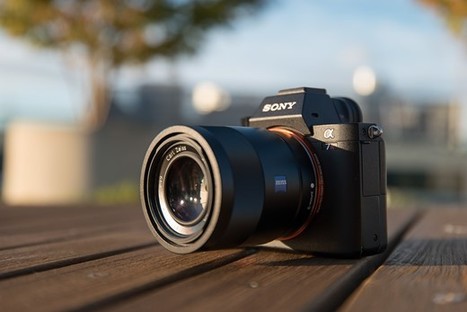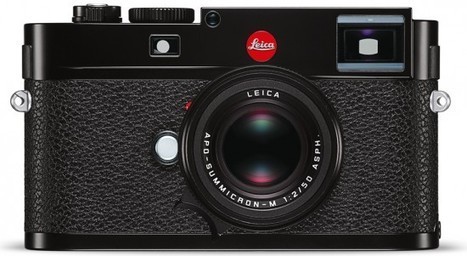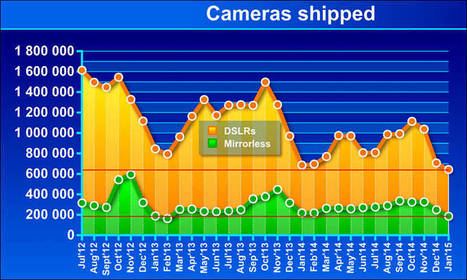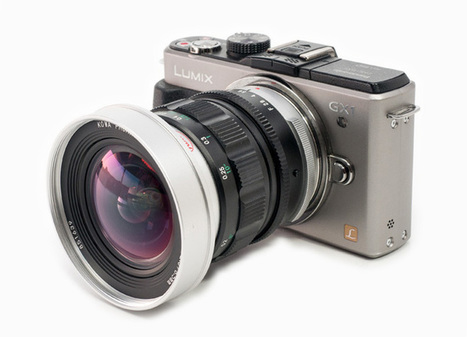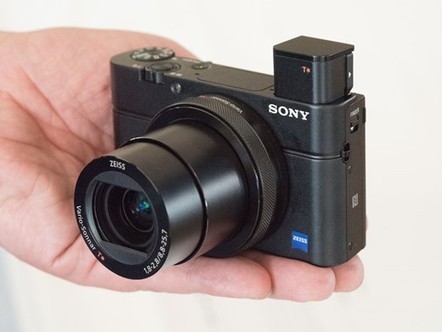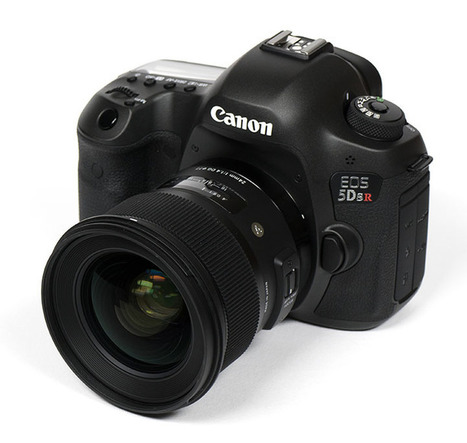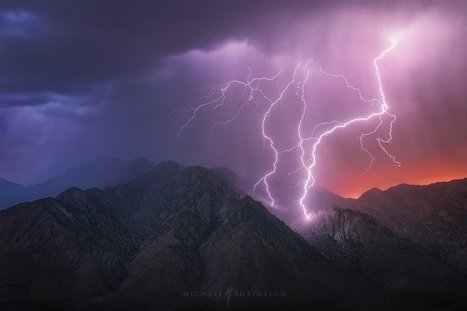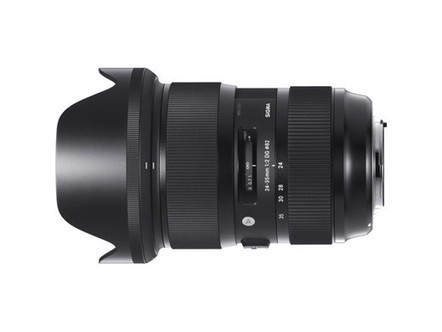Nikon's AF-S 24mm f1.8G is a wide prime designed for its series of cropped and full-frame DSLRs. It becomes the fourth Nikkor wide prime with an f1.8 focal ratio, joining the existing 20mm, 28mm and 35mm, completing this range of focal lengths.
Get Started for FREE
Sign up with Facebook Sign up with X
I don't have a Facebook or a X account

 Your new post is loading... Your new post is loading...
Back in the early days of digital photography – around 2001 / 2005 – a standard part of my seminars and lectures was to make a provocative statement… “Film is digital. Sensors are analogue.” This would freak people out because many believed at the time that there was something inherently “purer” about analogue imaging.
I would point out that film was inherently digital in nature because a silver halide particle when exposed to light would either turn black or not turn black. On-off. Yes-no. This is digital behaviour. It’s when you have millions of such particles displaying semi-stochastic behaviour at a microscopic level that we produce the appearance of a continuous tone image.
A camera sensor, on the other hand, is an analogue device. Each sensel (pixel) interprets the amount of light hitting it as a voltage. Voltage is analogue in nature – continuous not discrete. The sensor’s circuitry then converts the analogue signal from each sensel into a digital signal so that millions of them can be conveniently processed into an image.
Actually, sensors are digital as well because of the quantum nature of light – but that’s another story. Nevertheless – at its most basic level, film is digital and sensors are analogue.
So much for a background story. What does this have to do with ISO Invariance, and what the hell is ISO Invariance in the first place?
SLRgear Review Announced in August 2015, the 24mm ƒ/1.8G ED AF-S is the latest in a string of modern fast primes produced by Nikon, as it continues to overhaul and improve upon its offering in this area. Nikon's previous entry-level offering in the 24mm autofocus category was an ƒ/2.8, AF-D lens. The lens was designed with a full-frame FX sensor in mind, though it's also compatible with DX-sized sensors. On those cameras, the lens will produce a field of view of approximately 36mm. The lens takes 72mm filters, ships with a petal-shaped lens hood, and will be available for approximately $750...
Looking for an underwater camera review? Find out if the Nikon COOLPIX AW130 is the best waterproof camera!
Normal primes used to be fairly predictable products: small, light-weight, affordable, based on a rather simple design, yet nonetheless very sharp, especially stopped down. There were a few exceptions, of course, usually very expensive ones (think of Noctilux, Noct Nikkor or the EF 50/1.0 L USM), but most of the gang offered very similar features and performance - across all brands.
I purchased a Leica M Typ 240 new on the 18th of October, 2013. This review, or rather - user experience of this camera will be based on almost two years of owning it. I wasn't lucky with my exampl...
Having been testing lenses extensively for the past few years, I have seen all kinds of optical defects on even the most expensive / exotic lenses that cost thousands of dollars. One of the most common issues I have seen so far is lens de-centering, where a single optical element or a group of elements …
I generally do MTF testing on multiple copies of a given lens so that I can present the averages, look at sample variation, and stuff like that. I'm always aware that looking at any single copy of a lens, especially a zoom lens, gives only a limited prediction of how other copies might look. But sometimes a limited prediction is still pretty exciting. As luck would have it, I was able to get a single copy of the Sigma 24-35mm f/2.0 DG HSM Art lens for testing today. It will be a week before we have enough copies to begin doing out multiple copy tests, so I thought I'd go ahead and post the results of the one copy.
I am back from the mountains, after spending a couple of days testing the new Canon 5DS DSLR (see all 5DS / 5DS R related articles here) and waiting for the 5DS R to arrive.
Z Camera, a China-based photography startup, has introduced a connected Micro Four Thirds camera called the E1. Shaped like GoPro's HERO action cameras, the E1 carries a 16MP Four Thirds sensor and can record video at 4K 4096x2160 resolution. It provides Wi-Fi connectivity and an open platform for developers. Read more
Warning: This will be a longer and more in-depth post. But in the age of paid-for reviews, I felt frustrated by the lack of perspective on the "what camera
Quelle Surprise!* DxO has made a camera. And not just any camera. The DxO ONE features a 20MP 1"-type sensor and 32mm equivalent F1.8 lens, but it is designed to be used in combination with an Apple iPhone (or iPad). The idea is that the ONE takes care of the camera and image storage part of the equation, while the phone donates its powerful onboard computer and touchscreen. In combination, the ONE and your phone should comprise a more powerful capture device than you'll find built in to any current smartphone or tablet.
The Sony a7R II is the company's newest addition to the popular full-frame mirrorless line, and caused quite a stir with its introduction earlier this month. In this opinion piece technical editor Rishi Sanyal explains exactly why he thinks this camera is potentially groundbreaking in many ways. Read more |
Though it's the fifth model in Sony's full-frame E-mount lineup, the a7R II arguably represents just as much of a technological leap forward as its first mirrorless full-frame predecessors did. Its 42MP full-frame BSI CMOS sensor, 399 on-sensor phase detection point AF system and 5-axis IS are just a few reasons why the a7R II is one of the most talked-about cameras of the last year. See how it performed in our comprehensive testing.
Today Leica Camera announced their new entry level Leica M Typ 262 digital rangefinder. The new M model is basically the "light" or the "M-E" version of the current M Typ 240. The main differences compared to the M 240 model are:
Ricoh's upcoming full-frame Pentax DSLR is getting more real! The last time we saw it, the as yet unnamed camera was barely more than a chunk of carved plastic, but at this week's Photo Plus Expo in New York, a much more advanced mockup was on display at the Ricoh booth.
Today Google unveiled the Nexus 6P. Having partnered with manufacturer Huawei to build this latest device, the Nexus 6P is the first to run Google’s most up-to-date version of its Android operating system — Android OS 6.0 Marshmallow (or “Android M”). Tech specs for the Nexus 6P include a large 5.7-inch (1440 x 2560-pixel) AMOLED screen with Corning Gorilla Glass 4 and 16 million colors. The rear camera offers a 12.3Mp resolution on a 1/2.3”-type sensor, video resolution of 2160p at 30fps, and a lower-resolution front-facing 8Mp secondary camera. Other features for the Smartphone photography enthusiast include laser autofocus, LED flash, stabilization, face detection, HDR+, GEO tagging, and a built-in picture editor. Available with either 32Gb, 64Gb or 128Gb internal storage. We’ve put a pre-release sample of the Nexus 6P through our industry-standard image quality tests prior to today’s launch and are delighted to bring you the results. 
Reeda Malik's curator insight,
September 30, 2015 8:20 PM
Based on the specs alone, and what I've read so far, this is the one that will potentially bring me back to the Android camp :)
Sony has just announced that its latest cameras will gain the option to shoot uncompressed Raw files. The move comes in response to user feedback (and, we're told, our efforts to communicate this feedback to the company's senior management), and provides a choice between shooting the with the existing two-stage lossy compression or an uncompressed Raw file. Given the interest that was generated when we detailed the effects of Raw compression, we thought it was equally important to make clear the benefits of the newly-added uncompressed Raw option.
If you haven’t noticed, camera sales are down. I mean, they’re way down. Unsurprisingly, everyone’s scrambling to find a reason why. There’s a video floating around from Mayflower Concepts that, at the very least, explains what is not the cause for the camera sales drop. If you don’t have 50 minutes to watch it for …
The Fujifilm X-T10 puts many of the X-T1's capabilities into a smaller, less expensive body. It uses the same 16MP X-Trans CMOS APS-C sensor and EXR Processor II, though its 2.36M-dot EVF and 3" 920k-dot LCD are slightly downgraded from the X-T1. Despite a more compact body it offers an additional custom function button and even squeezes in a pop-up flash. Can the X-T10 hold its own in an incredibly competitive field? Read our full review to find out.
"Kowa who?" - that's probably your first thought here I reckon. No, it's not another obscure manufacturer with a backyard workshop. Kowa is indeed a fairly big company with high quality optical products and quite some history behind them. Established in 1894(!) Kowa is a multinational Japanese company with almost 2000 employees and multiple product ranges and activities. In terms of optical products they are renowned for their spotting scopes, binoculars and industrial lenses. They even manufactured cameras till the late 1970s. The Kowa Six was their high profile product at the time - a medium format camera plus a large lineup of lenses. And it seems as if they are willing to try a comeback again. It all started a few years back when they introduced a -let's call it- hybrid lens - the Kowa Telephoto Lens Spotting scope which can be used both as a spotting scope as well as a super-tele lens for DSLRs. It even featured a fluorite crystal element - thus a super-expensive component also used by Canon in their very best lenses. Due to the lack of AF, it probably isn't an overly successful product but it seems as if they felt the wind of opportunity. Thus they just introduced a set of three new lenses for the Micro-Four-Thirds system which we'll all cover here at Photozone. In this first review we'll discuss the Kowa Prominar MFT 8.5mm f/2.8 - thus an ultra-wide angle prime lens with a full format equivalence of "17mm".
The fourth iteration of Sony's Cyber-shot RX100 series brings a host of high-speed features from super slow-mo movies to 4K video with virtually no rolling shutter. It all stems from the RX100 IV's 20MP stacked CMOS sensor and the additional room for high speed circuitry that the design allows. Our full review is well under way; for now take a look at the first installment.
Sigma keeps on rolling out more "Art" (professional grade) series lenses - obviously with quite some success as you can also conclude from our previous reviews of Sigma Art lenses. Slowly but steadily Sigma has gained quite a reputation in the professional community as well. This shows that Sigma's "A1" quality control system really does make a difference (are you listening Fuji, Samsung, Pentax, Tokina ...?) - after all pros value optical consistency as much as sheer performance. This time we'll have a look at the Sigma 24mm f/1.4 DG HSM | Art thus a moderate ultra-wide angle lens (full format). Thus now we got "arty" versions of the 24mm, 35mm and 50mm. The 85mm will be next in line for sure in the foreseeable future.
At the young age of 24, photographer and time lapse creator Michael Shainblum has already created an impressive resume.
Sigma has announced the 24-35mm F2 DG HSM Art, a constant wide-aperture, wide-angle zoom for full frame cameras. Part of the company's high-end 'Art' range, Sigma suggests the lens can play the same role as a 24, 28 and 35mm set of prime lenses. The lens has a minimum focusing distance of 28cm, giving a maximum magnification ratio of 1:4.4. Click through for more details |






